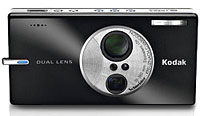 With a triumphant beat of its kodachrome chest, Kodak has announced the world’s smallest 10x optical zoom camera, the 6-megapixel KODAK EASYSHARE V610 dual lens digital camera
With a triumphant beat of its kodachrome chest, Kodak has announced the world’s smallest 10x optical zoom camera, the 6-megapixel KODAK EASYSHARE V610 dual lens digital camera
The camera uses the innovative Kodak Retina Dual Lens technology to deliver a thumping 38 – 380 mm (35mm equiv.) zoom range in a trouser, nay underpants untroubling package, measuring just 4.4 x 2.2 x 0.9 inches.
Using the same twin lens technology seen in its earlier V570 model, the V610 comes with a large 2.8-inch, high-resolution (230,000 pixels) LCD screen and 28 megabytes (MB) of internal memory.
There’s also Bluetooth support onboard, making it easier for snappers to dish out their photos to nearby chums with PDAs, mobile phones and computers or to beam ’em off to Picture Kiosks.
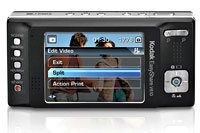 Naturally, this little fella shoots video – managing TV-quality (VGA) footage at 30 frames per second (fps) – saved out as MPEG-4 files with Kodak’s “video-specific image stabilisation technology” claiming to reduce that wobbly jelly camera effect.
Naturally, this little fella shoots video – managing TV-quality (VGA) footage at 30 frames per second (fps) – saved out as MPEG-4 files with Kodak’s “video-specific image stabilisation technology” claiming to reduce that wobbly jelly camera effect.
Bathing in the warm glow of technological progress, Carolyn Walsh, Product Sales Director Digital at Kodak, hit PR overload: “Kodak innovation continues to make it easier for people to take and share better, sharper pictures. We’re creating cameras for the digital age, breaking traditional constraints by using multiple light paths, lenses and sensors; by incorporating wireless technologies; and by taking advantage of advanced digital processing algorithms.”
Also on board is Kodak’s ‘Perfect Touch Technology’ for boosting up duff, dull pics, a ‘Favourites’ mode for storing a hundred fave pics on a built-in album and a panorama stitching feature.
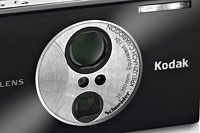 When it comes to auto modes, Kodak haven’t held back with no less than twenty-two scene modes, three colour modes and a custom mode, along with selectable exposure metering, exposure compensation, focus zones, ISO, and single/continuous auto-focus for precise control.
When it comes to auto modes, Kodak haven’t held back with no less than twenty-two scene modes, three colour modes and a custom mode, along with selectable exposure metering, exposure compensation, focus zones, ISO, and single/continuous auto-focus for precise control.
And if you can’t manage to take a decent picture with that lot on board, perhaps you’d be better off with some crayons and paper.
The Kodak Easyshare V610 zoom digital camera will be available in the UK in May 2006 for around £350.
EasyShare V610 specifications
Sensor 6.1 million pixels total
2832 x 2128, 2832 x 1888 (3:2), 2304 x 1728, 2048 x 1536, 1200 x 900 (email)
Movie clips 640 x 480 @ 30fps, 320 x 240 @ 30fps up to 80mins depending on memory capacity
File formats JPEG (Exif 2.21), MPEG 4 with audio
Lens Schneider-Kreuznach C-Variogon Dual lens, 10x optical zoom, 38-114mm F3.9 – 4.4, 130-380mm F4.8
Digital zoom 4x
Focus TTL-AF, Multi-zone AF, Center spot AF, AF area modes, Single AF, Continuous AF
Focus distance Wide: 0.6m – infinity
Wide Macro: 0.05m – 0.7m
Tele: 1.6m – infinity
Tele Macro: 0.7m – 1.7m
Metering TTL-AE, Multi-pattern, Center weighted, Center spot
ISO sensitivity Auto (ISO 64-400), ISO 64, ISO 100, ISO 200, ISO 400, ISO 800
Exposure compensation +/- 2.0EV in 0.3EV steps
Exposure bracketing 0.5-8 sec
Shuttter speed 8-1/1200 sec
Aperture F3.9 – 4.4, F4.8
Scene modes Auto, Portrait, Panorama left-right, Panorama right-left, Sport, Landscape, Snow, Beach, Text, Fireworks, Flower, Manner/Museum, Self portrait, Party, Children, Backlight, Panning shot, Candlelight, Sunset, Custom
White balance Auto, Daylight, Tungsten, Fluorescent, Open shade
Self timer 10 sec, 2 sec, 2 picture
Continuous shooting 1.6 fps, max 8 images
Image parameters High Color, Natural Color, Low Color, Sepia, B&W
Flash Built-in, Auto, Off, Fill, Digital red-eye reduction
Range: Wide: ISO 280: 0.6m – 3.4m
Tele: ISO 400: 0.6m – 3.3m
Viewfinder No
LCD monitor 2.8-inch, 230,000 pixels
Connectivity Bluetooth 2.0 EDR, AV out, USB 2.0
Weight (no batt) 160 g (5.6 oz)
Dimensions 111 x 55.5 x 23.2 mm (4.4 x 2.2 x 0.9 in)
 Slimmer than a stick insect with the runs, the new world’s thinnest phone comes in the shape of the EV-K100 handset, an ultra-thin gizmo made by Korean cell phone makers KTF Technologies.
Slimmer than a stick insect with the runs, the new world’s thinnest phone comes in the shape of the EV-K100 handset, an ultra-thin gizmo made by Korean cell phone makers KTF Technologies. “We substantially cut down the thickness of the antenna incorporated into the EV-K100 and instead extended its length to secure all the necessary functions,” said a KTF spokesman.
“We substantially cut down the thickness of the antenna incorporated into the EV-K100 and instead extended its length to secure all the necessary functions,” said a KTF spokesman.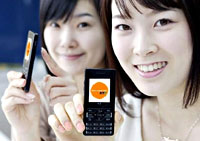 The company intend to market the bar-type EV-K100, codenamed “No. 7,” from next week via its parent firm KTF for around 400,000 won ($412).
The company intend to market the bar-type EV-K100, codenamed “No. 7,” from next week via its parent firm KTF for around 400,000 won ($412).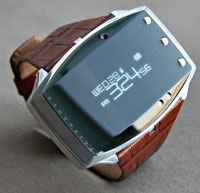 Seiko Instruments has announced their first Bluetooth watch, known as either the BT Watch or the rather less snappy, CPC TR-006 ver.1.0.
Seiko Instruments has announced their first Bluetooth watch, known as either the BT Watch or the rather less snappy, CPC TR-006 ver.1.0.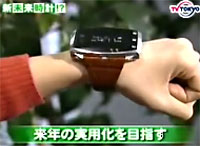 If you get an SMS or email on your phone the watch can alert you, and if your phone’s ringing, you won’t have to rummage about in your bag or pockets to see who is calling – the number will appear on the watch.
If you get an SMS or email on your phone the watch can alert you, and if your phone’s ringing, you won’t have to rummage about in your bag or pockets to see who is calling – the number will appear on the watch.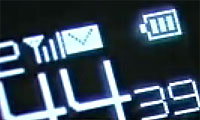 Now, much as we like the idea of cool high tech toys buzzing away on our wrists, we have to say that this watch looks more than a bit silly – it’s so big you may as well strap your mobile onto your wrist and be done with it!
Now, much as we like the idea of cool high tech toys buzzing away on our wrists, we have to say that this watch looks more than a bit silly – it’s so big you may as well strap your mobile onto your wrist and be done with it!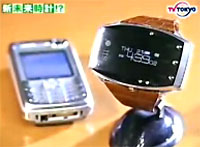 We reckon it would be cool to have text messages, news headlines, RSS feeds, football scores and other short bursts of info appear on your watch – particularly when you’re stuck in a dull meeting.
We reckon it would be cool to have text messages, news headlines, RSS feeds, football scores and other short bursts of info appear on your watch – particularly when you’re stuck in a dull meeting.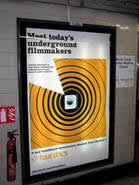 The easy way of getting “content” into a mobile phone, would be just to print 2D barcodes. However, Viacom Outdoor has started a rather more challenging experiment, fitting London Underground posters with Bluetooth transmitters.
The easy way of getting “content” into a mobile phone, would be just to print 2D barcodes. However, Viacom Outdoor has started a rather more challenging experiment, fitting London Underground posters with Bluetooth transmitters. They’ve been bustier than Jock McHasty in a rush at i-mate, as the PDA/smartphone vendor releases another addition to their range, the i-mate PDA-N – the company’s first GPS PDA.
They’ve been bustier than Jock McHasty in a rush at i-mate, as the PDA/smartphone vendor releases another addition to their range, the i-mate PDA-N – the company’s first GPS PDA.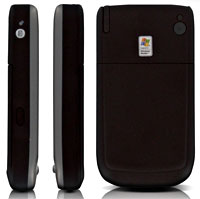 The front of the slim device is dominated by a 2.83″ 240×320 pixels transmissive TFT-LCD screen supporting 64k colours, with a row of four buttons and a joystick below.
The front of the slim device is dominated by a 2.83″ 240×320 pixels transmissive TFT-LCD screen supporting 64k colours, with a row of four buttons and a joystick below.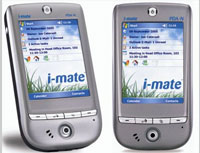 According to I-mate, the PDA-N notches up a rated battery life of 5 hours in GPS mode and 8 hours playing a looped video.
According to I-mate, the PDA-N notches up a rated battery life of 5 hours in GPS mode and 8 hours playing a looped video.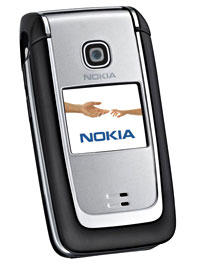 Nokia has shunted out a new addition to their mid-range mobile portfolio with the new Nokia 6125 clamshell phone, offering stereo audio streaming over Bluetooth and FM Radio.
Nokia has shunted out a new addition to their mid-range mobile portfolio with the new Nokia 6125 clamshell phone, offering stereo audio streaming over Bluetooth and FM Radio. The quadband Nokia 6125 operates in GSM 850/900/1800/1900 networks and provides a flight mode, which enables the user to work with calendar or listen to music while on the flight – although we’ve heard of airlines like Virgin insisting that you turn off all phones – including those with ‘flight modes.’
The quadband Nokia 6125 operates in GSM 850/900/1800/1900 networks and provides a flight mode, which enables the user to work with calendar or listen to music while on the flight – although we’ve heard of airlines like Virgin insisting that you turn off all phones – including those with ‘flight modes.’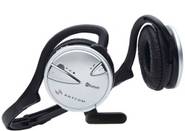 It has taken the Bluetooth headset industry a remarkably long time to twig that we don’t want to use one headset for listening to music, and then frantically rip it off to use another Bluetooth headset for answering the phone. Anycom has the one… at a price.
It has taken the Bluetooth headset industry a remarkably long time to twig that we don’t want to use one headset for listening to music, and then frantically rip it off to use another Bluetooth headset for answering the phone. Anycom has the one… at a price.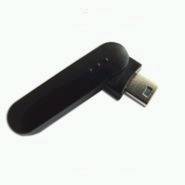 And the icing on the cake: a Bluetooth audio gateway. Without further details (actual hands-on reviews!) this is probably going to seem more wonderful than it can in reality be: but what we’re hoping it will do, is allow you to plug several audio inputs into it, and switch between them – from landline phone to Skype, from Skype to iPod, from iPod to mobile phone.
And the icing on the cake: a Bluetooth audio gateway. Without further details (actual hands-on reviews!) this is probably going to seem more wonderful than it can in reality be: but what we’re hoping it will do, is allow you to plug several audio inputs into it, and switch between them – from landline phone to Skype, from Skype to iPod, from iPod to mobile phone.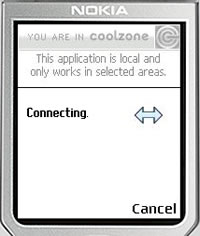 Today Nokia announced CoolZone, a Bluetooth-based distribution system that lets mobile phone users locally browse, pay for and download content on their mobiles while they are in shops supporting it.
Today Nokia announced CoolZone, a Bluetooth-based distribution system that lets mobile phone users locally browse, pay for and download content on their mobiles while they are in shops supporting it.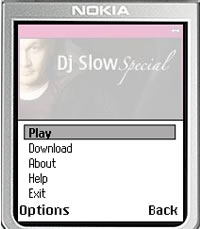 As the user of the service needs the user to download an application to use the service, we can imagine little hacking groups are already forming plans to hang around near these shops offering their own ‘applications’ with similar names to unsuspecting, or inexperience users.
As the user of the service needs the user to download an application to use the service, we can imagine little hacking groups are already forming plans to hang around near these shops offering their own ‘applications’ with similar names to unsuspecting, or inexperience users.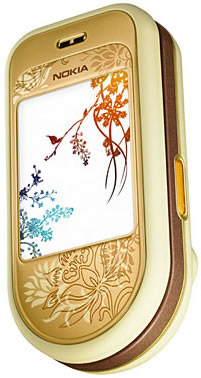 Mobile phone giants Nokia have announced three new phone models aimed at the “style-conscious” market.
Mobile phone giants Nokia have announced three new phone models aimed at the “style-conscious” market.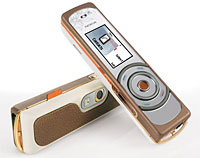 Desperately described as a phone for “trend-setting men and women who enjoy being the centre of attention,” the highly distinctive 7380 looks like it’s come from the same bonkers design studio as the
Desperately described as a phone for “trend-setting men and women who enjoy being the centre of attention,” the highly distinctive 7380 looks like it’s come from the same bonkers design studio as the 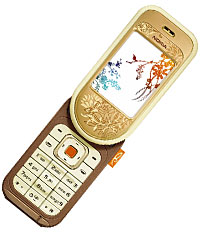 Employing a sliding keypad, the Nokia 7370 comes with a 2-inch QVGA colour screen (320 x 240 pixels), stereo speakers with 3D sound effects and a 1.3 megapixel camera (8x zoom) onboard.
Employing a sliding keypad, the Nokia 7370 comes with a 2-inch QVGA colour screen (320 x 240 pixels), stereo speakers with 3D sound effects and a 1.3 megapixel camera (8x zoom) onboard.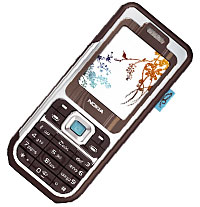 Nokia 7360
Nokia 7360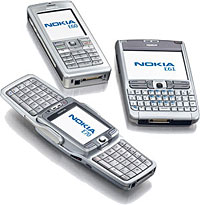 Nokia has announced the Eseries phones, a new range of devices designed for swivel action execs and be-suited business bods.
Nokia has announced the Eseries phones, a new range of devices designed for swivel action execs and be-suited business bods.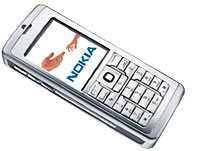 The devices are the first in the industry to support remote device management based on OMA DM*, letting IT managers remotely control and protect corporate data on the device and fiddle about with phone configurations. Or just have a good nose about.
The devices are the first in the industry to support remote device management based on OMA DM*, letting IT managers remotely control and protect corporate data on the device and fiddle about with phone configurations. Or just have a good nose about.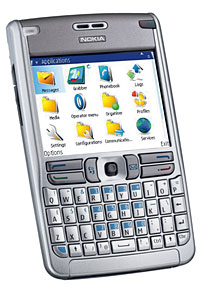 Nokia E61 (right)
Nokia E61 (right) Nokia E70 (left)
Nokia E70 (left)